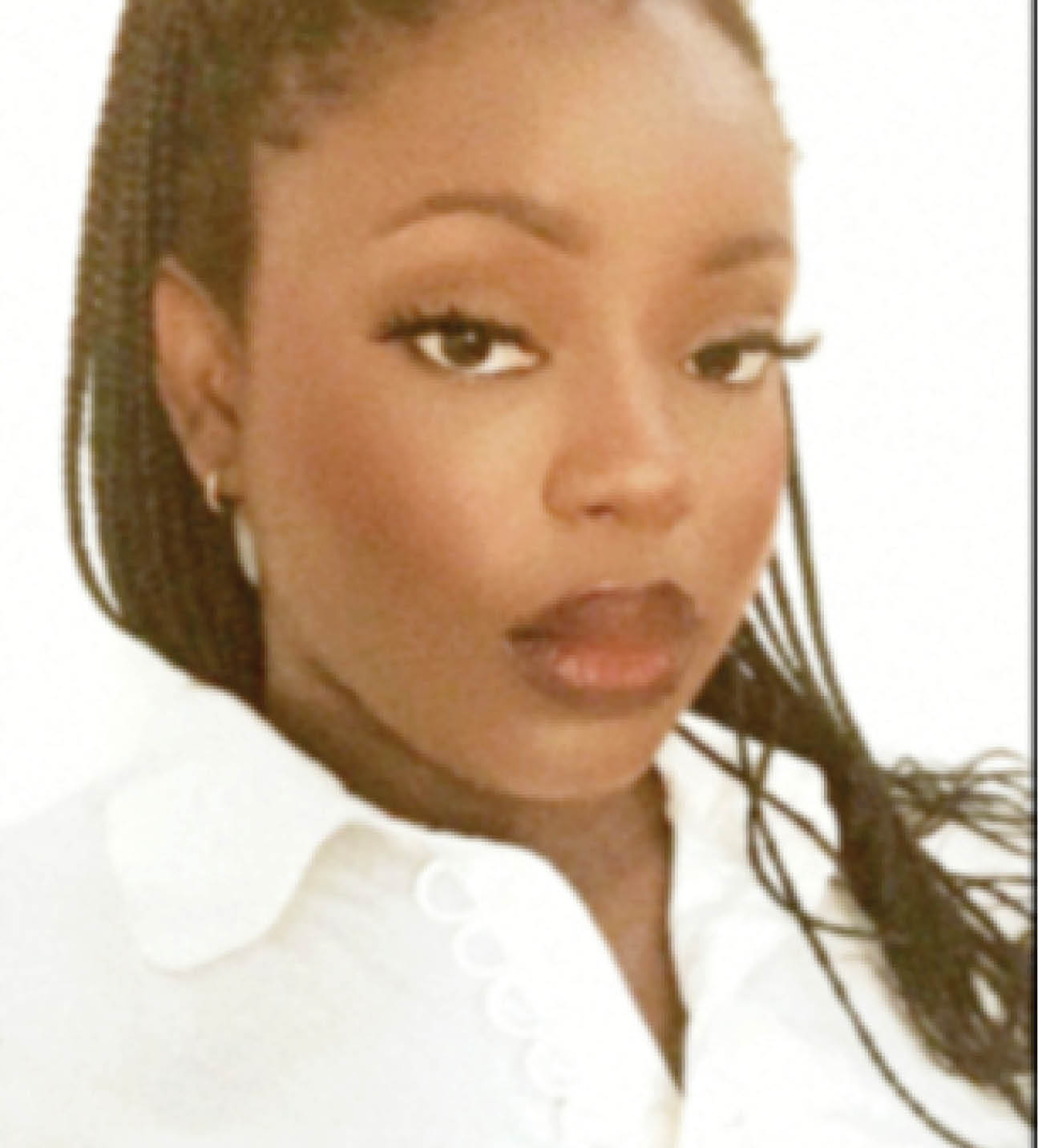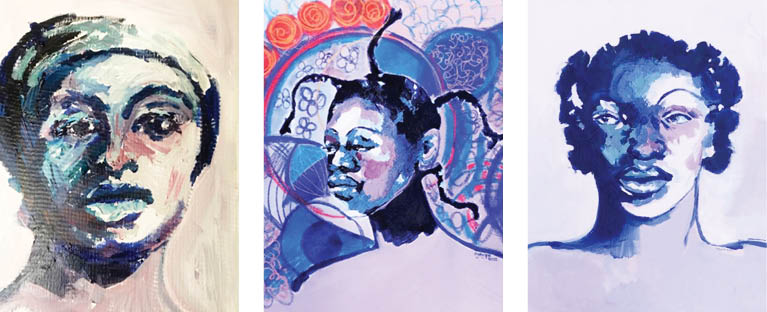My work explores complex human emotions – Blossom Oyeyipo
Blossom Oyeyipo is an artist. In this interview with Daily Trust on Sunday, she spoke of her work, what inspires her and other vital details about her. Tell us about your background and how it affects your work? I’ve always been involved in art right from childhood. I was encouraged early on by my mum […]

Blossom Oyeyipo
Blossom Oyeyipo is an artist. In this interview with Daily Trust on Sunday, she spoke of her work, what inspires her and other vital details about her.
Tell us about your background and how it affects your work?
I’ve always been involved in art right from childhood. I was encouraged early on by my mum to pursue it as a creative outlet and a hobby when she noticed interest at the age of 7. I went on to take private lessons at home, then I joined the art club in secondary school where I was encouraged to try different art styles including papier-mâché sculpting, painting and the things I made were exhibited in the school. I studied Building Technology in university but also picked art as my entrepreneurial route back then. When I came out of school, I knew exactly what I wanted to do but pursued construction briefly before venturing into the wild world of art-making in Nigeria.
When did you decide to pursue art fully, and how was your decision received at home?
I think everyone was surprised because even though I’d been saying it all my life, they didn’t think I would actually go through with it. So, when I decided to fully pursue it in 2021, I didn’t really ask for opinions. I just did what I believed to be right in my heart.
How did you develop your art skills?
Initially, as stated earlier, I had two very instrumental teachers who encouraged me and saw something in me, Uncle Wilhelm (now late) and Mr Terna who taught fine art in Hillcrest Secondary School, Calabar. I took a break from serious drawing to focus on school for 5 years, so I was a bit rusty when I started again, I turned to self-taught route, luckily, we live in the age of accessible knowledge at every turn, YouTube, books, online courses and in 2021, I took drawing classes at Universal Studio of Art for a short period of time which really signified a growth in my work.
What motivates you to create?
My medium is painting so I make paintings and drawings about personal experiences and subject matter that I empathize with. Most of my subjects are women and I’m constantly inspired by them every day. My work is informed by conversations, social discourse, and presents my point of view on matters that are peculiar to women.

What societal issue does your work express and why that choice?
My work explores topics such as autonomy, social conditioning and relational dynamics through a feminist lens. I have always looked to art as a way of coping and working my questions in life, both as a maker and as an observer. My work explores complex human emotions through the use of semi-abstract portraiture because you can’t really see emotions, can you? But they can be perceived and expressed. I’m interested in what goes on in one’s mind in terms of internal dialogue and then how that plays a role on interrelationships and relational dynamics. My subjects are usually women because when I’m working, I consider feminist phenomena such as the gaze and autonomy and I can easily provide a personal perspective being a woman myself. I started the Ori series in 2021 (still ongoing) and it makes up majority of my body of work now. It’s a series of blue abstract female portraits made using found images and self-portraits as references and I invite the audience into my imaginative dreamscape making interpretations of their own.
How has your artistic career progressed so far?
I’m grateful for my journey so far and to those who have consistently helped me along the way. From 2020 till now, I have showcased at the following exhibitions; 2022, Art at Ouida (curated by June Creative Art Advisory)- Lagos, Nigeria, SPLIT a Noire Experience (Whitespace curated by Sosa Omorogbe)- Lagos, Nigeria (Group) What About Love? (Angels and Muse, curated by Naomi Edobor)- Lagos, Nigeria (Group), 2021; Expo Lagos (curated by The Self Expression Exhibition)- Lagos, Nigeria (Group), 2020; The Noire Art Exhibition – Lagos, Nigeria (Group).
Has your style evolved over time and how?
Although most of the lessons I took in the past were focused on realistic portraiture, I find myself drawn always to the abstract, surreal and the purely imaginative. It’s my happy place, I never get bored there. Because of that, I’ve ended up with a semi-realistic style of painting that leans into abstraction because I believe very much in the non-physical and intangible aspects of human existence and I try my best to portray those things in my work.
Is there a particular atmosphere or tool that’s essential to your work?
I wake up every day to work, I mostly prefer silence but otherwise I listen to jazz music or subliminal sounds. My space has to be neat, so I clean the studio and arrange my tools ahead of time.
What factors influence the price of an artwork?
The price of an artwork can be influenced by a number of factors, the inherent value of the work, the stage of the artists career, the gallery or art dealer etc. It’s not fixed in stone.
Which of your works will you tag your favourite?
This is a difficult question to answer but I’m biased towards “Rest” (2022) -a diptych, “Woman” (a small portrait made in 2021) and all the paintings from the numbered Ori Series.
Have you ever had a creative block and how did you overcome it?
Of course. Many times, anytime I find myself in a creative rut, I try to go out and learn a new thing till it fades away, recharge and come back to it.
Will you say art is more appreciated now in Nigeria and how does that affect your career as an artist?
The art scene is starting to open up, due to the world becoming a global village; same with music really. Opportunities are no longer limited to the location. People work with galleries and residencies overseas. More Nigerian patrons are being involved and a lot more activities are starting to be organized around the arts so yeah, that’s very good for artists coming up now including me. There’s a future in the arts, it’s not easy at all but there’s hope.
What jobs have you done other than being an artist?
I worked briefly in the construction and real estate development sector because that was what I studied in uni. I left in pursuit of my dreams although it is still a valuable life experience.
How do you know when a work is finished?
That varies but honestly you just know. You feel confident sending it out into the world after you look at it and there’s nothing else to be done. After you’ve gone through the usual process, given it sometime to breathe and taken a fresh look at the work and there are no more corrections to make, then it’s done. There’s a famous quote that says a painting is never finished, only abandoned. So, you have to know when to abandon a piece after you’ve done your absolute best, so you don’t overwork the piece.
What are the challenges of being an artist in Nigeria?
There are several but being self-trained, some are peculiar to me and others like me. First of all, the average Nigerian doesn’t really appreciate art or understand what you do so just prepare for people to ask what you do and put on a frown when you say so or act overly amused. Materials can be very expensive so cost of production can be quite high, especially if you’re very consistent. There aren’t enough platforms for artist development and mentoring so, initially you have to push your own growth and boundaries and there might be anyone to give you direction which is good in a way because you work out of your own resource but can be daunting and overwhelm sometimes.
Which artists are you influenced by?
I’m influenced by a lot of artists every day; you go on social media and see what everyone is doing and it can be over stimulating most times. When I want to work, I turn everything off. But I’ve discovered artists that have made impact in my life at different milestones, of course we have the impressionists like Renoir with the loose brushstrokes that I’ve always tried to study. My friend gave me a book on Jean Michel Basquiat once and it changed my life. Yves Klein influenced my current use and exploration of the colour blue and several female artists who have paved the way and broken glass ceilings like Yayoi Kusama, Artemisia Gentileschi and many others.
Do you plan each piece out before you start, or do you let the piece “take shape” as you go?
Yes, I plan out each painting with a sketch, I make a contrast drawing to determine the tonal values and work out my proportions. It’s like design and sometimes you have to make iterations. I used to work more spontaneously but I’ve found over time that I enjoy the lingering process and just prefer for it to almost work out on the canvas because I’ve done the necessary calculations on paper first. It shows when you prepare for a painting so unless I’m going for a spontaneous effect, I’d rather do sketches first. Sometimes, I work out the colours on a small piece and other times, I just go to the main canvas with my contrast drawing so it really just depends.
